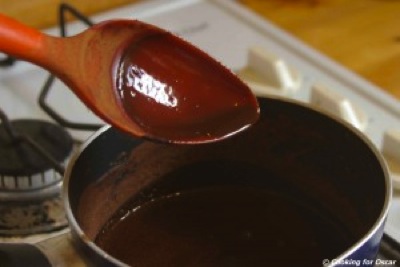So I am pleased to report that we just made carob syrup for the first time, and it is surprisingly nice! The carob bean is something like 78 % sugar. Traditional recipes call for 5 kgs of carob beans and 4 kgs of sugar, but I am quite happy with the carob on its own. The tree is dioecious (and here spell check can’t help me) It means there are male and female trees. It takes about 20 years to find out who is who and the females to start bearing .The bad news is, only one in 10 is a female. On the bright side they are all handsome evergreen trees and wow, do the females ever crank out the carob pods! If you are a clever clogs you can successfully graft most of your trees with female scions. Might give it a go one day with no expectation of success.
These trees can handle any amount of heat and drought once established. Carob pods are very sweet and mineral rich and a great stock food, but for me they are a tad fibrous. I call them a fibrous mars bar. But lo! Carob syrup can be rendered out of the pods. It fits in wonderfully with Mediteranean permaculture, because the pods ripen in May and can be collected and stored easily. Come June you will probably have a wood stove going, burning the latest tree that fell down on a fence to heat the home and boost your solar hot water. You just break up the carob pods in your hands while talking on the phone ( its not messy), then soak this in a pot for a day, then boil for an hour or 2, strain out the juice and put it back on the stove. Reserve the dregs for the pigs to cheer them up on a cold, miserable day. With the fire going the juice evaporates down overnight to yummy syrup. It doesn’t seem to need stirring.
If you put cream with it and some roasted nuts, it is heavenly. I think a new winter tradition has just begun at our place. All ingredients could come from any half decent WA permaculture, so being a locavore doesn’t have to mean being skinny. At our place chestnuts, macadamias, walnuts and pecans fall from the trees in late May.



